Ensuring Product Authenticity: A Comprehensive Guide for Your Brand
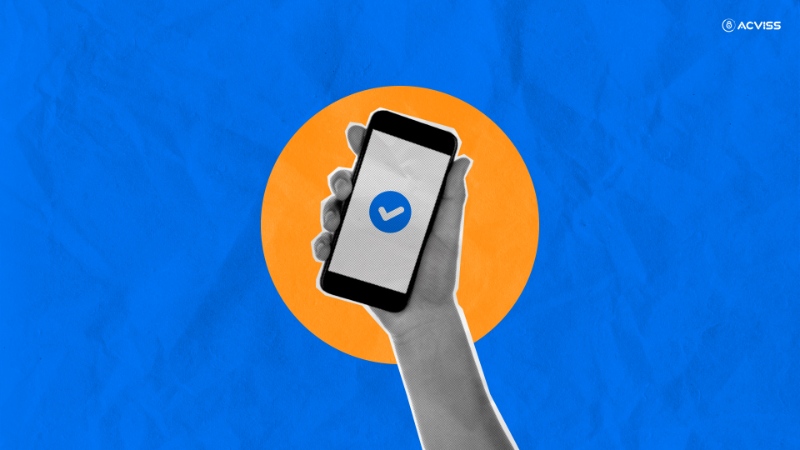
Whether you're purchasing luxury items, electronics or everyday essentials, the risk of encountering counterfeit products looms at large. But fear not. With the right knowledge and tools at your disposal, you can safeguard yourself from falling victim to counterfeit scams.
Let’s learn your enemy before you go out to war.
Contents
What is Counterfeiting?
Counterfeiting are unauthorised reproduction or imitation of a genuine product, often to deceive consumers into believing they are purchasing the original item. They range from luxury goods to daily drives posing significant economic, health and safety risks. According to the International Chamber of Commerce, counterfeiting cost the global economy a whopping $3 trillion in 2022.
The Role of Product Authentication
The foremost answer to prevent counterfeiting is by ensuring product verification. It involves verifying the authenticity of a product through various methods and technologies, thereby safeguarding consumers from potential harm and protecting the interests of legitimate manufacturers. Consumers can make informed purchasing decisions, while businesses can protect their brand reputation and revenue streams.
The Necessary Steps in the Verification Process
No matter the product you are planning to purchase, you will have to equip yourself with these four verification steps.
- Familiarize yourself with the characteristics of genuine products within the category you're interested in. This may include studying brand logos, packaging features, product design and other identifying markers.
- Purchase products from authorized retailers or directly from the manufacturer whenever possible. Authorized retailers are more likely to sell genuine products, reducing the risk of encountering counterfeits.
- Examine the packaging and labels for signs of tampering, poor print quality, misspellings or mismatches in design. Genuine products will feature high-quality packaging with clear branding and labelling.
- Keep track of the industry standard price of the product. Counterfeits are largely sold at a huge discount or impossibly cheap rates. Learn the manufacturer's price of the product from their website before you place the order.
Generally, these can keep you safe from day to day. However, the verification method will vary depending on the products you are using. You can easily verify the warranty details for your new Apple devices on the website but the same won’t apply to your Himalaya Shampoo. So it is necessary to learn the varied methods of verification across different product categories.
1. Electronic Industry
One in ten electronic products might be fake. The dangers of fake electronic products can result in serious safety and security risks. From substandard components causing device failure to malicious implants gathering sensitive data, the consequences are far-reaching. Smartphones, computers, gaming consoles and gadgets are highly susceptible to counterfeiting due to the rising demand in the new technological era.
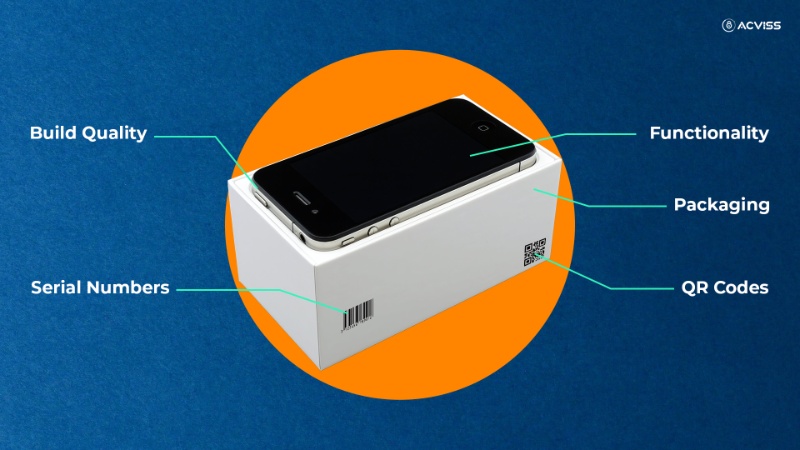
How to Verify Electronic Devices
- Packaging:
Packaging is a selling point for every product today. Brands, particularly in the electronic industry focus on improving the unboxing experience of the customer. So, while making a purchase ensure the packaging doesn’t have any dents or defects. Double-check the brand name, logo and product information on the packaging, any errors indicate a fake product. Usually, the packaging will have original hologram stickers containing the brand logo or name or saying it's genuine. Check if the labels are present.
- Serial Numbers:
Serial numbers are a prime method of product verification. Especially for electronic devices, it is a necessity to have them. You can directly cross-verify the serial number provided in the packaging of the device with the official website. This will also you to learn the warranty details and coverages of the product.
- Build Quality:
If you pay $1000 for an iPhone, you wouldn’t expect a plastic body or a wobbly button. It is important to pay close attention to details like seams, buttons and overall construction of the devices. Often use or hold a real product in hand and familiarise the feel before purchasing it, this will reduce half the chances of falling into a trap.
- Functionality:
Not just the body, most counterfeit electronic devices fail to mimic the performance of the original product. Test the device thoroughly to ensure it meets manufacturer specifications and performs as expected. Listen to the audio quality of your new Apple AirPods and compare the quality with your friends to find the differences. The earliest you do it, the easier it is to return.
- QR Codes:
Most electronic devices you can purchase today will have a QR label attached to it. Scan and verify the label on the packaging and the device. In most cases, the different parts of the device will have individual QR labels. The QR codes that, when scanned, link to the manufacturer's website and product information. Scan the QR code and compare the details with the product in your hand.
Steps to Verify your Apple products
- Check the serial number on the website: Visit the Apple Check Coverage website. Enter the product's serial number to verify its authenticity and warranty status.
- Verify with Apple Support: Contact Apple Support with the product's serial number or model information for verification.
- Check Software and Settings: Navigate to the device's settings to check for genuine Apple software. Ensure the device runs iOS, macOS, or the appropriate Apple operating system without issues.
- Review Documentation: Ensure the product includes official Apple documentation and accessories.
2. Automobile Industry
Automobiles are highly prone to a dangerous wave of counterfeiting, posing significant safety and economic threats. Estimates suggest up to 10% of auto parts sold online might be fraudulent, failing unexpectedly, increasing the risk of accidents and injuries.Over 20% of the accidentscaused on Indian roads are caused by counterfeit parts. Airbags, brake pads, electrical components, engine control units (ECUs), sensors and body parts are the most targeted automobile parts by the counterfeiters.
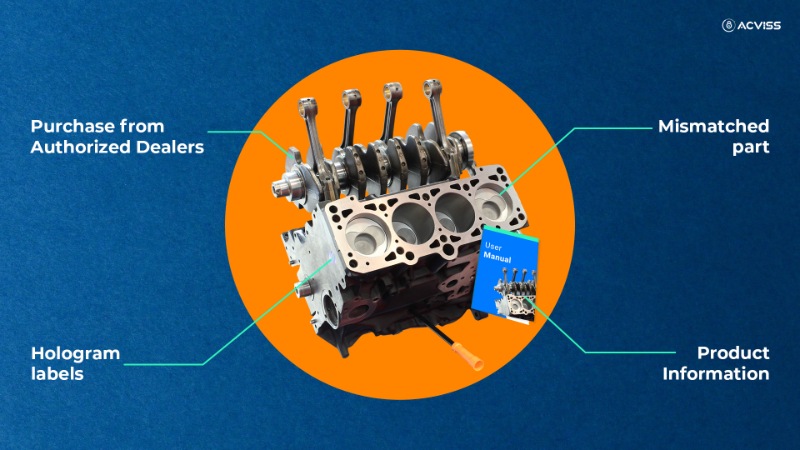
How to Verify Automobile Parts
- Purchase from Authorized Dealers
The majority of the counterfeit parts and grey market products are circulated through unauthorised dealers. Your chance of encountering fraud depends on where you buy it from. So, always buy parts from authorized dealers or directly from the manufacturer to ensure authenticity and quality.
- Product Information
Even if the product looks the same as an original, check the user manual or the documentation the product comes with. Upon reading, if you come across recurring spelling errors, missing steps or sentences that don’t make sense, it will be a fake.
- Hologram labels
Automobile parts will come in branded packaging with clear labelling and identification. Holographic authentic stickers are the common verification tools used in the automobile industry, along with QR codes or RFID tags for additional security. Keep your eyes open for any labels and verify them by scanning them or entering the number on the official website of the brand.
- Mismatched part
A counterfeit spare part won’t stay consistent with other parts of a car. OEM parts will seamlessly align with the other parts whereas counterfeits with their design, colour and weight will stick out like a sore thumb.
3. FMCG Industry
Up to 30% of FMCG products sold in India are counterfeits. These fakes, often target popular brands from soaps and shampoos to food and beverages. They contain harmful ingredients, lack efficacy, or even be repackaged used products. From skin allergies to food poisoning, the dangers are diverse, while brands lose billions and consumer trust takes a hit.
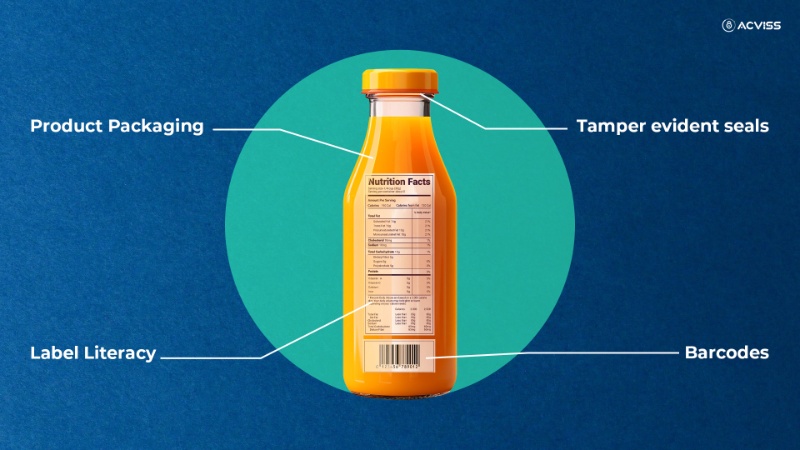
How to Verify FMCG Products
- Product Packaging
FMCG brands invest heavily in packaging design, so be cautious of inconsistencies. Inspect for typos, low-quality printing, or mismatched information compared to the brand's website. Dents, tears or obvious tampering could also indicate a fake.
- Check Certifications:
Look for certifications such as FSSAI, AGMARK or FPO marks mentioned in the packaging to ensure the quality and authenticity of the food products. These certifications indicate compliance with standards and regulations maintained in India.
- Label Literacy:
Check for the labels containing the manufacturer's name and address, ingredients list, expiration date and batch codes. Compare these details against the brand's website or official sources to ensure legitimacy.
- Tamper evident seals:
Pay attention to seals and tamper-evident features. Original products often have security seals, original hologram stickers or shrink-wrap that are difficult to replicate perfectly. Broken or missing seals are a red flag.
- Barcodes:
Scan the barcode with a barcode scanner app on your mobile. If the scan fails or yields incorrect information, it's a cause for concern. Legitimate products will have scannable and accurate barcodes linked to their official details.
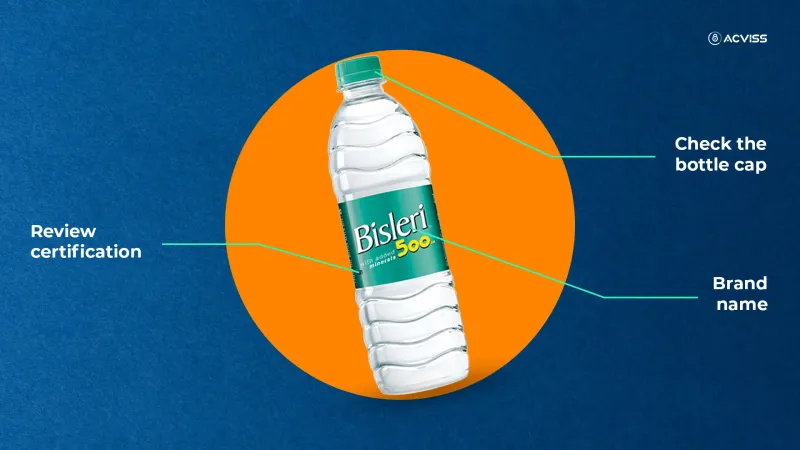
Steps to Verify Bisleri Water Bottle
Bisleri products are highly counterfeited resulting in a major health c to crisis for its customers and leaving a giant hole in the company's revenue.
- Check the bottle cap: Genuine bottles have their brand name engraved on the top of the cap. Conduct a visual and tactile inspection to confirm its genuineness.
- Review certification: Under governmental regulations, water bottles must pass safety standards and furnish their ISI and FSSAI certification in the bottle packaging. If it's missing, the product will be a fake.
- Brand name: Misspelling brand or product names is a big red flag. The market is flooded with fake 'Bisleri' products like bilseri, bislari and names similar to the original. Make sure the spelling, design and colour match the original.
Ensure to take your time to learn about the product you are going to buy. Only purchase products you trust and even then, verify their authenticity.
4. Apparel Products
The fashion and apparel industry gets the most heat from the counterfeits. Sneakers, handbags and luxury brands are top targets, driven by fast fashion trends and status symbols. Due to their poor quality and low durability, they are largely dumped within a short period, becoming a significant contributor to pollution and climate change. Counterfeit apparels are often manufactured in factories employing children and exploiting workers.
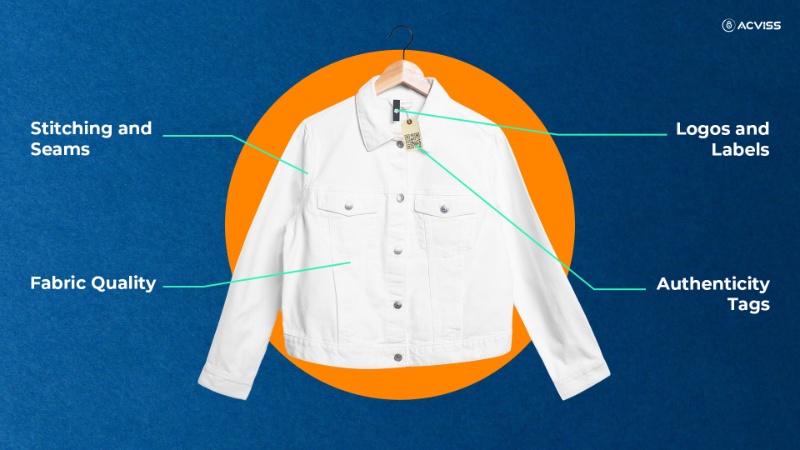
How to Verify Apparel Products
- Stitching and Seams:
Take a close look at the stitching. Uneven stitches, loose threads or fraying fabric are red flags. Authentic apparel features tight, consistent stitching and clean seam finishes. Run your fingers along the seams; they should feel smooth and secure.
- Fabric Quality:
Feel the fabric. Does it feel thin, cheap, or rough? High-quality clothing uses luxurious, durable materials that feel soft, smooth and substantial. If it feels off, it probably is.
- Logos and Labels:
Inspect the logos and brand labels. Are they faded, crooked, or poorly printed? Do the fonts and colours match the brand's usual style? Counterfeiters often make subtle mistakes. Compare the logo and label details with high-resolution images from the brand's official website.
- Authenticity Tags:
Many brands include authenticity tags or codes with their products. These may be holographic stickers, woven labels with unique serial numbers, or QR codes. Verify the information on these tags/codes with the brand's website or app. Fake codes often lead to irrelevant websites or error messages.
Must Read: Learn the strategies to build an authentic brand in 2024.
5. Pharmaceutical Industry
From ineffective mimics to dangerous concoctions, the risk counterfeits pose to the pharmaceutical industry is terrifying. Anti-infectives, antibiotics, and lifestyle drugs like erectile dysfunction treatments top the list due to high demand and complex supply chains.

How to Verify Pharma Products
- Product Seal:
Check the seal of the product. Ensure the seals are intact. If the seals are absent or the product has any visible tampering in it, return it to the seller and report it to authorities.
- Serialisation
Authorities across the globe have started to take actionable steps in serialising every pharma product. This allows you to verify the authenticity by checking the serial number against the manufacturer, helping a speedy authentication process.
- Side effects:
If the medication results in any allergic reaction or visible distress, you may have been using a fake drug.
- Labelling and package:
Counterfeit drugs have a high chance of spelling errors on their packaging. Stop and carefully read the medicine before purchasing it. Recurring errors are a red flag. Carefully read the product name, manufacturer name, manufacturer details, substances included, manufacturing and expiry dates.
- Discounts:
Low prices can be a deciding factor for many customers to buy fake products without considering its consequences. If you see a sudden price drop in pharma products, the chances are pretty high they are fake products. So if the price seems to be too low compared to the original price, don’t buy it.
6. Agriculture Industry
The agriculture industry has been suffering from counterfeits for the longest. Fake fertilizers, pesticides and even seeds harbour inferior ingredients, ineffective performance and hidden contaminants, potentially harming harvests and consumers. Herbicides, insecticides, fungicides and livestock medications top the list of most counterfeited, highlighting the urgent need for stricter regulations in securing our food safety and agricultural sustainability.
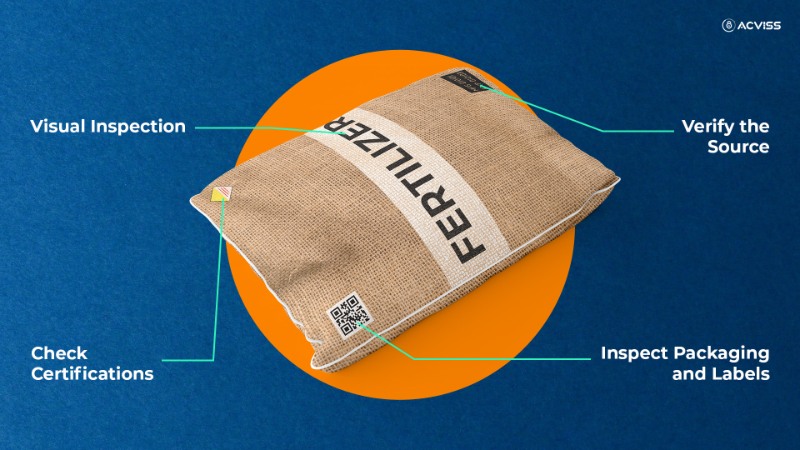
How to Verify Agro Input Products
- Visual Inspection:
Give your produce a thorough check. Are there signs of damage or unusual blemishes? Does it match the expected size, colour and texture for its variety? A quick Google search can help you identify typical appearances.
- Inspect Packaging and Labels:
Authentic agro products come in secure packaging with clear labelling, product information and expiration dates. Check for any signs of tampering or damage to the packaging.
- Verify the Source:
Most products will have QR labels which you can scan to trace the products back to their source, such as farms or production facilities. Origin by Acviss is widely used in coffee products which allows consumers to access the entire supply chain from its source to the supermarket shelf, enabling them to learn the ethical and sustainability practices employed by the farmers and the brand.
Must Read: A Closer Look at India's GI tagged Products
7. Nutraceutical Products
The nutraceutical industry is booming, offering many products promising health benefits. However, with increasing demand comes the grave risk of counterfeiters posing as original sellers. Such products can undermine health and safety causing adverse effects. Compromised ingredients, incorrect dosages, fake advertisements; the risks posed by counterfeits are huge. Here's how to verify genuine quality products.
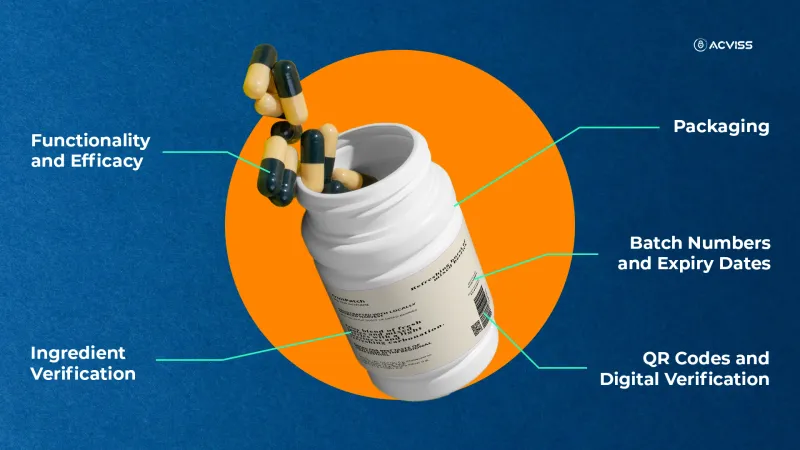
How to Verify Nutraceutical Products:
- Packaging
Primarily inspect the packaging of nutraceutical products for any tampering or defects. Especially look for what they are advertising in the front package. Verify the claims online or on the labels behind the package. Make sure their claims are fact-based and not some marketing gimmicks.
- Batch Numbers and Expiry Dates
Expiration dates are critical for nutraceutical products as any usage after that can be hazardous. Every product will also be manufactured with the batch number and expiration date on the product packaging, along with the information provided on the brand's official website or by contacting customer service. This verification step can also help you identify any recalls or safety warnings associated with the specific batch.
- Ingredient Verification
One of the key aspects of nutraceutical product verification is ensuring that the ingredients listed on the label match what is inside the product. Cross-check the ingredient list with the brand's official website or trusted sources. Look for third-party certifications like FSSAI or FDA or other seals of approval from reputable organizations that verify the product's ingredients and quality standards.
- Functionality and Efficacy
Fake products won't live up to the promise. After purchasing a product, monitor its effects and compare them with the expected outcomes based on the manufacturer's claims. If the product does not meet your expectations or causes any adverse reactions, it may be counterfeit. Consult with a healthcare professional if you have any concerns about the product's efficacy or safety.
- QR Codes and Digital Verification:
Many nutraceutical brands now use variable QR Codes on their packaging as an additional layer of security. Customers can easily scan them with a mobile device and access the product information. They may be linked to the manufacturer's official website or a trusted verification platform, providing detailed information about the ingredients, manufacturing location, manufacturing date, and batch number. Ensure that the information obtained from scanning the QR code matches the details on the product packaging.
8. Plywood Products
Plywood is an essential material in the construction and furniture industries, valued for its versatility, strength, and cost-effectiveness. However, the market is also plagued by counterfeit plywood, which can compromise structural integrity and safety. To ensure you are purchasing genuine, high-quality plywood, consider the following verification steps:
How to verify Plywood Products.

1. Certification Marks:
Authentic plywood often comes with certification marks from recognized industry bodies. These certifications ensure that the plywood meets certain standards of quality and safety. Some common certification marks to look for include:-
- ISI (Indian Standards)
- BS (British Standards)
- CARB (California Air Resources Board)
2. Physical Inspection:
Thoroughly inspect the plywood for its physical attributes, which can reveal much about its quality and authenticity. The surface of high-quality plywood should be smooth, without any bumps, gaps, or overlaps in the veneers. Examine the edges to see the core layers. Genuine plywood will have uniform, evenly layered veneers without gaps or overlaps. Measure the thickness at multiple points. Authentic plywood should have consistent thickness throughout.
3. Branding and Labels:
Most plywood manufacturers imprint their brand name, logo, and other product details directly onto the plywood sheets. Ensure the brand name is correctly spelt and the logo matches the official branding. Look for batch numbers and manufacturing dates, which can help trace the product back to the manufacturer.
Learn how Kitply Plywood secured their products with Acviss: Case Study
4. Quality Tests:
In case you have bought plywood and are confused about its authenticity, performing simple quality tests can help confirm the authenticity of plywood. Conduct a Boil Test by boiling a small sample of the plywood in water for a few hours. Genuine waterproof plywood should show no signs of delamination or deterioration. Bending tests can also help verify the authenticity. Gently bend a small piece of plywood. Authentic plywood will be flexible and return to its original shape without cracking or splitting.
5. Supplier Verification:
Purchasing from reputable suppliers and dealers can significantly reduce the risk of buying counterfeit plywood. Check online reviews and ratings for the supplier to ensure they have a good reputation for selling genuine products. Ask for certificates of authenticity and other relevant documentation to support the genuineness of the plywood.
Fighting Fakes: How Acviss Safeguards a Leading Plywood Brand
9. Alcohol and Wine Industry
The alcohol and wine industry is one of the most heavily targeted sectors by counterfeiters, with fake alcohol accounting for nearly 25% of the global market in some regions. Counterfeit alcohol not only damages the reputation and revenues of premium brands but poses serious health risks, including poisoning and even fatalities, due to the use of dangerous chemicals like methanol in fake products. Luxury wines, spirits, and even mid-range liquors are increasingly vulnerable to these threats, as counterfeiters mimic packaging and branding to deceive consumers.
How to Verify Alcohol and Wine Products
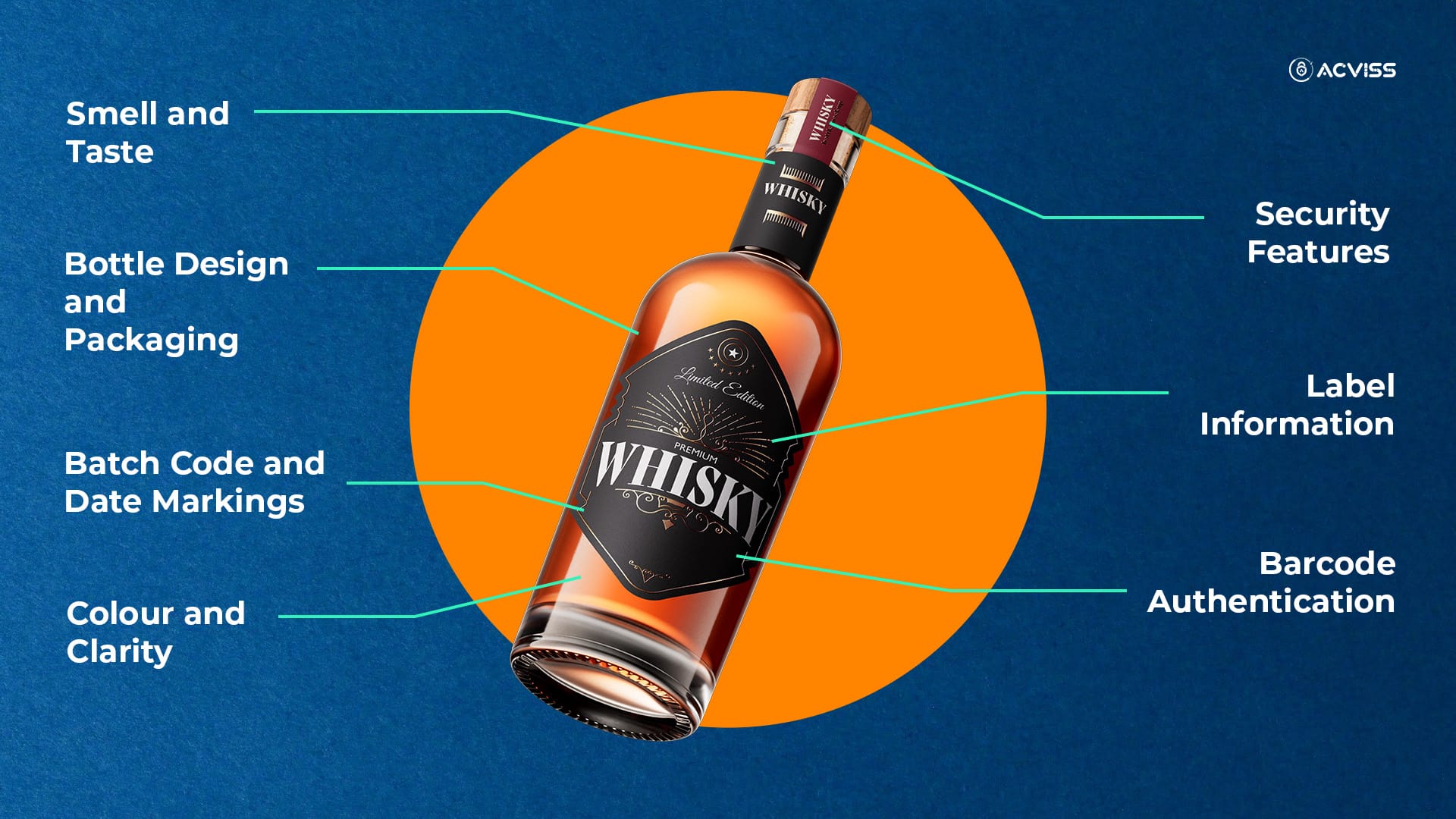
1. Bottle Design and Packaging:
Genuine alcohol brands pay close attention to the details of their bottle designs, caps, and labels. Inspect for inconsistencies such as uneven printing, spelling errors, or poor-quality finishes. Ensure the bottle is sealed properly and the closure mechanism (e.g., cork or screw cap) matches the brand's official standards.
2. Security Features:
Look for tamper-evident features like shrink-wrap seals, non-cloneable holograms, or unique serial numbers. Premium alcohol brands often integrate advanced anti-counterfeiting technology in their labels, such as QR codes or security threads.
3. Batch Code and Date Markings:
Verify the batch code, production date, and expiry date against the manufacturer’s database or website. Counterfeit products often have mismatched, illegible, or absent batch numbers.
4. Label Information:
Check the label for the brand's name, origin, alcohol content, and compliance certifications such as BIS (Bureau of Indian Standards) or ISI marks. Compare the details with the brand's official website to confirm accuracy. Verify the BIS details by cross-checking the authenticity on the BIS official application.
5. Colour and Clarity:
Inspect the liquid for uniformity in colour, clarity, and sedimentation. High-end wines and spirits should not have visible impurities or inconsistencies in appearance.
6. Barcode Authentication:
Scan the barcode or QR code provided on the packaging. Many brands now offer digital authentication tools that link directly to their database, verifying the product’s authenticity. If the scan fails or leads to an unrelated site, it is a potential counterfeit.
7. Smell and Taste:
Counterfeit alcohol often smells or tastes different due to low-quality ingredients or harmful additives. If the aroma or flavour seems unusual or harsh, avoid consuming the product.
10. Watch Industry
The global watch industry, especially luxury timepieces, is a prime target for counterfeiters. Fake watches, often sold at a fraction of the price, mimic renowned brands such as Rolex, Omega, and Tag Heuer. These counterfeits not only deceive consumers but also undermine the value of genuine watches. Counterfeit watches are usually made from substandard materials, lack precision, and fail to offer the craftsmanship or durability of the originals, tarnishing the reputation of established brands.
How to Verify Fake Watches
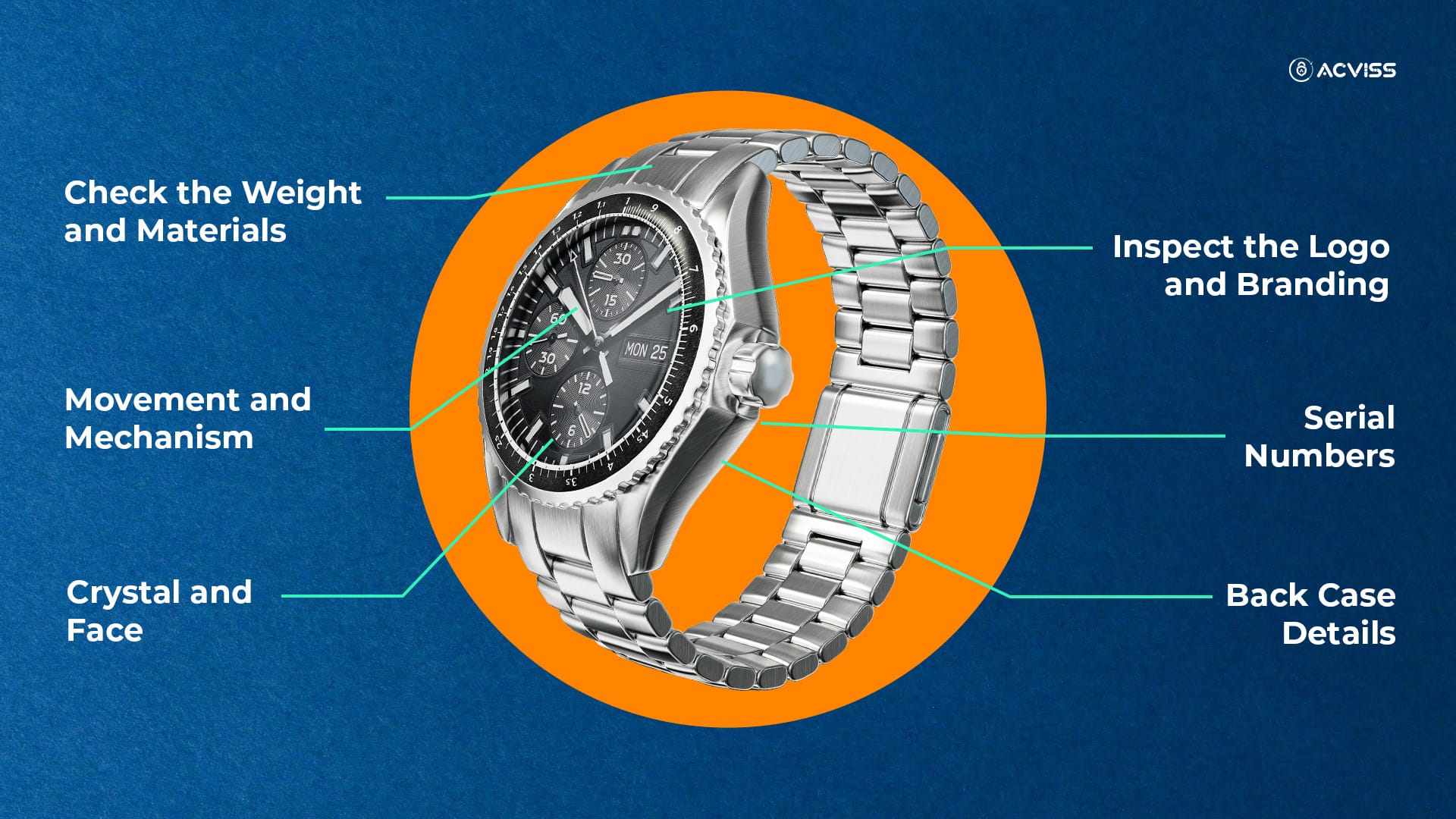
1. Examine the Packaging:
Authentic luxury watch brands provide high-quality packaging with precise branding. Counterfeit watches often come in generic or low-quality boxes with mismatched logos, spelling errors, or incorrect designs. Ensure the warranty card, user manual, and other documentation match the brand's official style.
2. Inspect the Logo and Branding:
Pay close attention to the logo and engraving on the watch. Genuine watches have sharp, clean, and accurate engravings, while fake ones might have uneven fonts, misspellings, or poorly aligned logos.
3. Check the Weight and Materials:
Luxury watches are made from high-quality materials and tend to feel heavier due to their superior construction. Counterfeit watches are often lightweight, with parts made of cheaper alloys or plastic.
4. Movement and Mechanism:
Observe the movement of the second hand. Rolex watches are infamous for their watch movement that people, making it one of their USP's. Authentic luxury watches typically have smooth, precise movements, especially in automatic or quartz models, while fakes may have jerky or inconsistent hand movements.
5. Serial Numbers:
Check for a unique serial number engraved on the watch case or back. Verify the number on the brand’s official database or with an authorized retailer. Counterfeit watches may have incorrect, poorly engraved, or duplicated serial numbers.
6. Crystal and Face:
Examine the crystal covering the watch face. Genuine watches often use sapphire or high-quality mineral glass, which is clear and scratch-resistant. Counterfeits might use low-quality glass that scratches easily or appears dull.
7. Back Case Details:
Inspect the back case for engravings, serial numbers, and branding. Counterfeit watches often miss small details, such as water resistance markings or the correct placement of engravings.
8. Lume Quality:
Luxury watches use high-grade luminous material for visibility in low light. Counterfeits often use poor-quality lume that fades quickly or is unevenly applied.
9. Authorized Retailer Verification:
Always buy watches from authorized retailers or the brand's official website. Brands like Tissot allow customers to find authorised sellers through their official website. Avoid deals that seem too good to be true, especially on unverified online platforms or marketplaces.
10. Barcode and Authentication Codes:
Many high-end watches now include QR codes or barcodes that link directly to the brand's authentication system. Scan the code to verify the watch’s authenticity.
11. Seek Professional Appraisal:
If in doubt, take the watch to an authorized dealer or a professional appraiser. They can inspect the watch’s internal mechanisms, materials, and authenticity more thoroughly.
Tempting Yet Lethal
Remember, the lower price tag can be tempting, but compromising on authenticity comes at a cost. Learning a few of these verification tips is not just protecting your wallet but safeguarding your health and safety and supporting genuine brands that create the quality products you deserve. So, the next time you shop, make sure you get what you pay for!
If you want to learn more about product authentication feel free to reach out to us here. Talk to our expert to understand how AI and Blockchain can help your brand defend against counterfeits in the online and offline markets.
Acviss has secured over 2 billion products for 80+ brands across industries. Get in touch to know how we can safeguard your brand and boost your growth.
